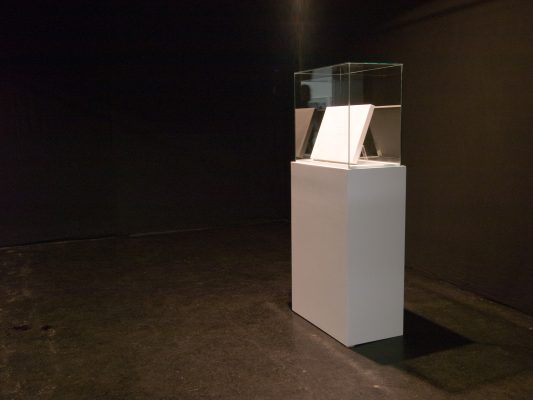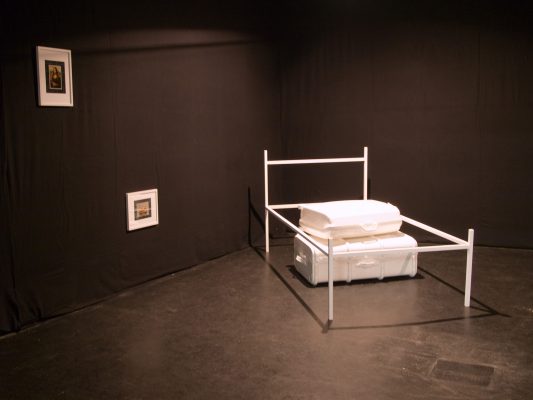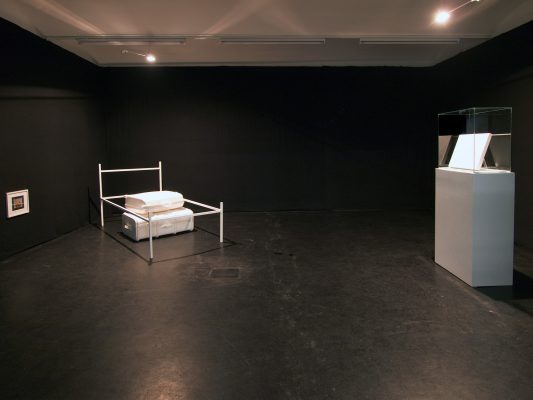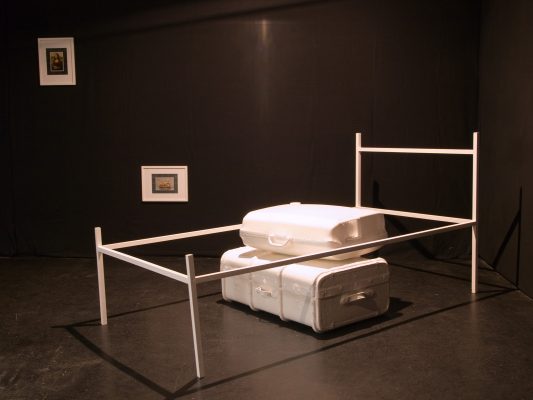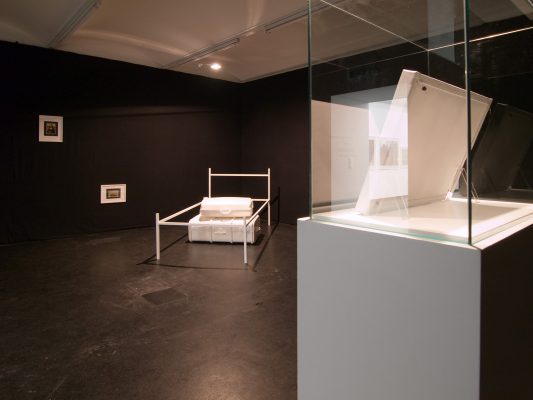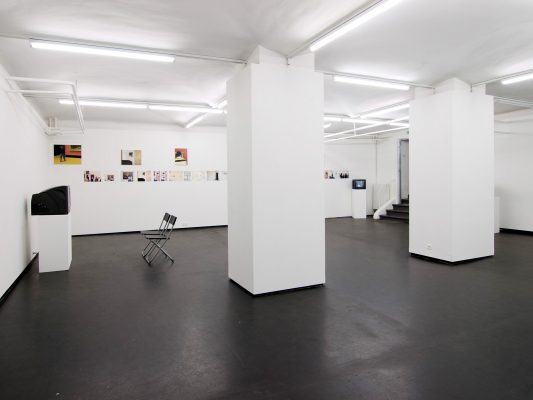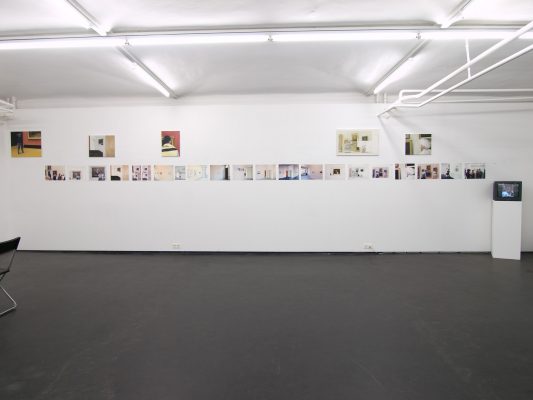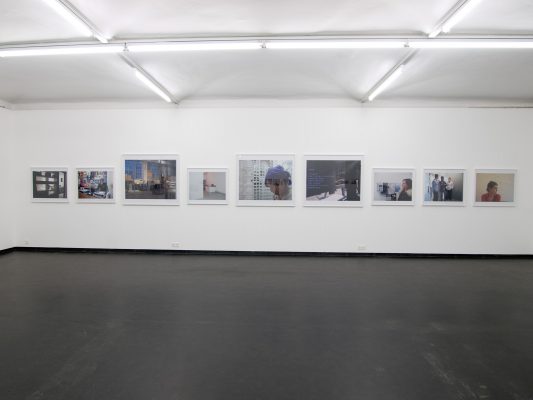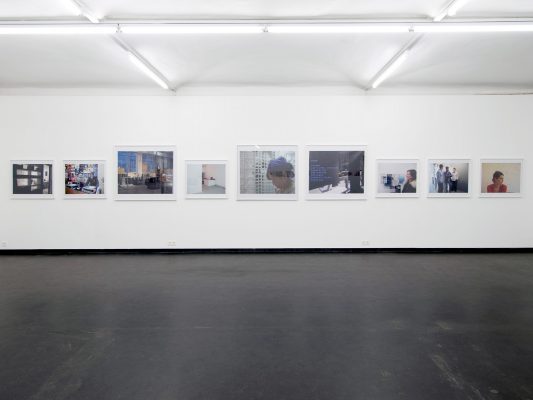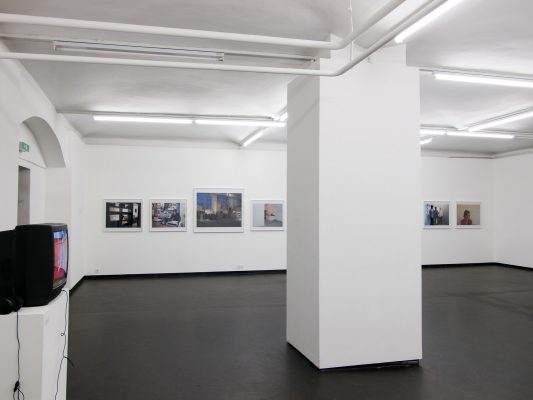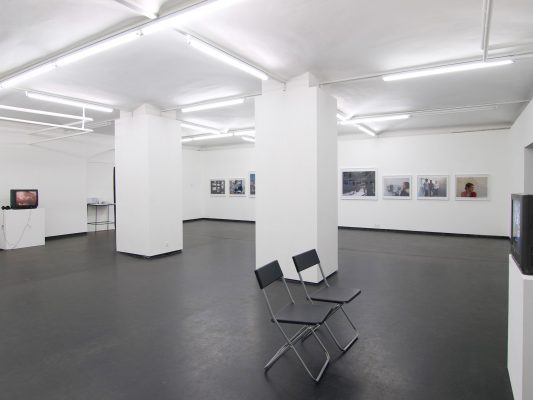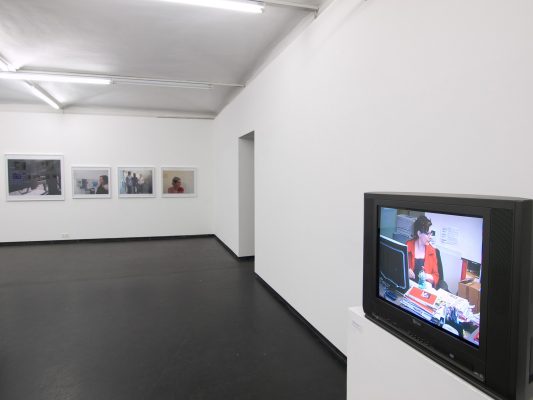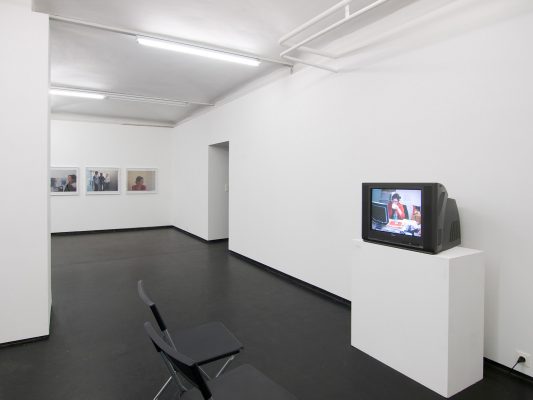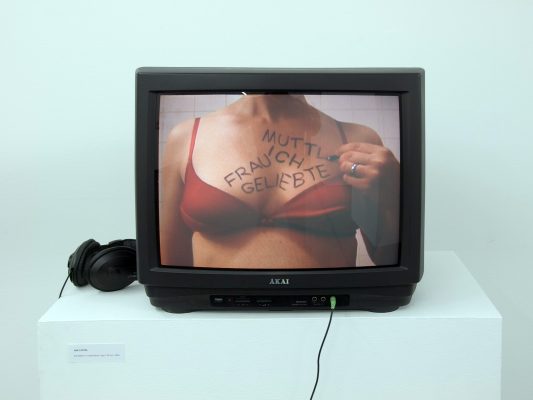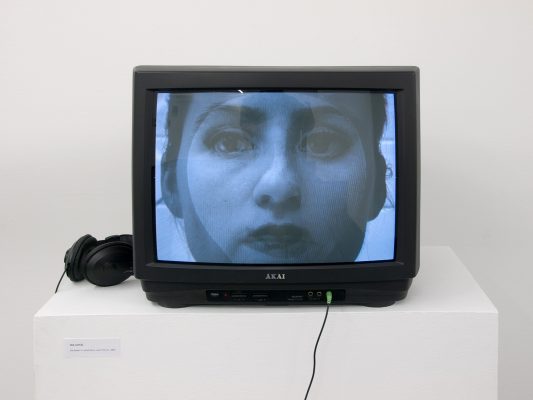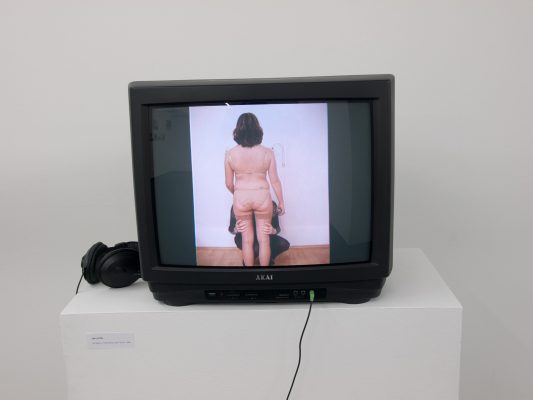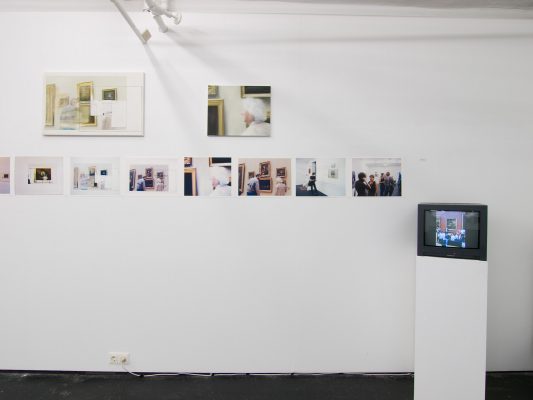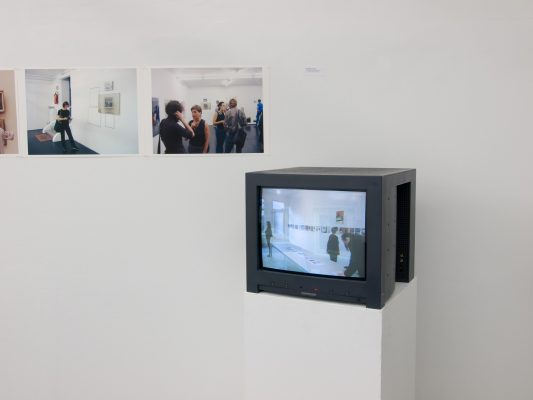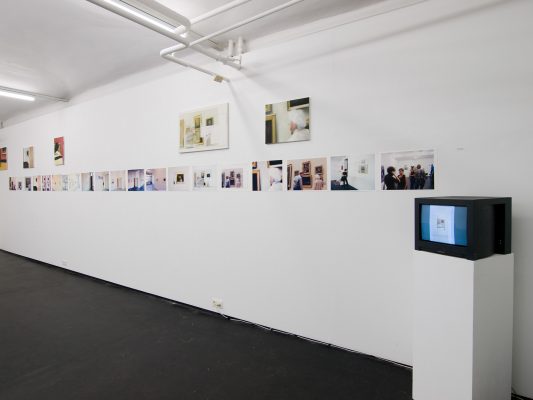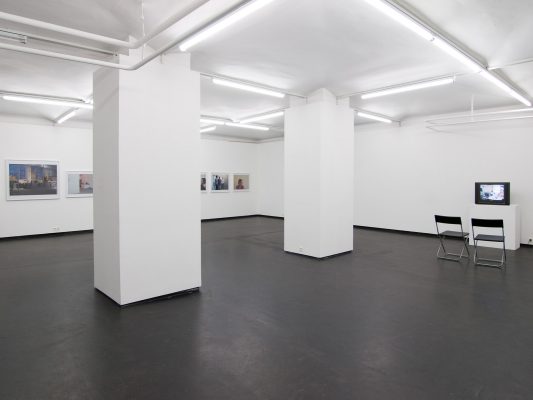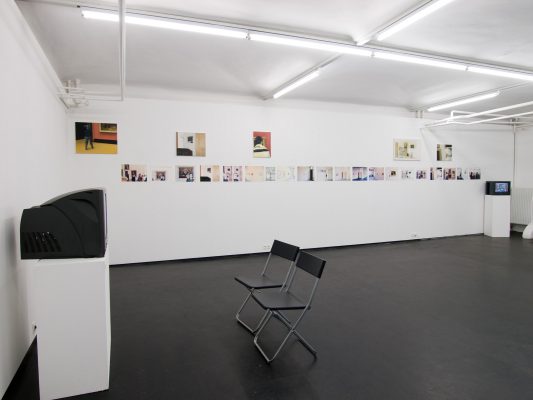Opening: 6. October, 7:00 pm
Art production, art presentation, art reception and art marketing are parameters enclosed in every work of art. With which social roles is an artist confronted? With which difficulties (monetary/temporal/market requirements) affect the artistic process? How is market price determined? Who stands behind the presentation spaces such as galleries and museums? What moves a visitor within an exhibition and what wakes their desire to want to possess art?
The exhibition The Field of Art addresses these questions from five different artistic positions.
Frederick Bells crossover between painting and photography Mass Observation watches the viewer observing historical paintings in museums. On the basis of photographs he creates new paintings and switches content between the social and historical context. Reproduction, originality, passed down values and changing meanings are examined and newly interpreted.
Christina Gillingers video Meine neue Arbeit (My New Work) brings up for discussion the discourse between artistic production/creativity and – the problem real with most artists – the wage labor. It describes the background of artistic work under the pressure of the reality of survival.
Nikola Hansaliks mixed media installations Rendez-Vous and the most beautiful photograph in the world argue likewise with „the fictitious “value of a work of art – which is produced by means of marketing and art market paradigms (artificial), as with the longing of the viewer, the collector, and the thief to possess the work of art for themselves. Parallels by art thievery and the duality of appropriation and hiding places are pointedly presented.
Ina Loitzls video Die Seelen in meiner Brust (The Souls in my Chest) is an analytic self portrait, which takes exception with the fragmentation into multiple roles (requirements) of ego, woman, loving, mother, artist, friend, child and questions the compatibility of societies life tasks, desires and beliefs.
In her project BE ON DISPLAY Sigrid Kurz photographs differently implied (art) areas like Non-for profit galleries, commercial galleries, institutes for art, into which the acting persons are incorporated. She shows portraits of artists, galerists, curators, and editors, displayed in their work environs in which they become part of the exhibition. In her photographs place, action and time are congealed into a stage set.
